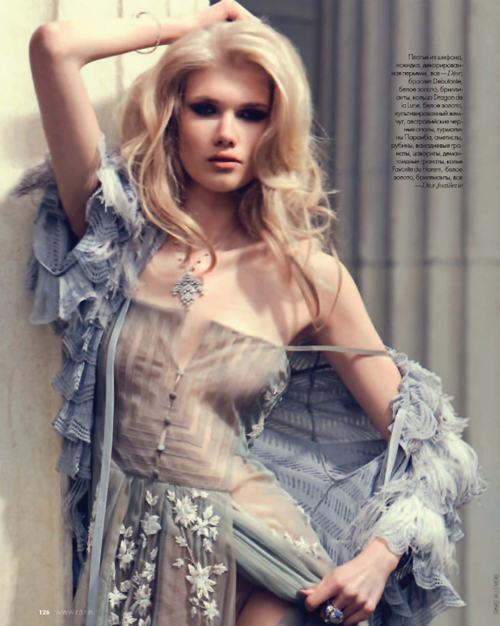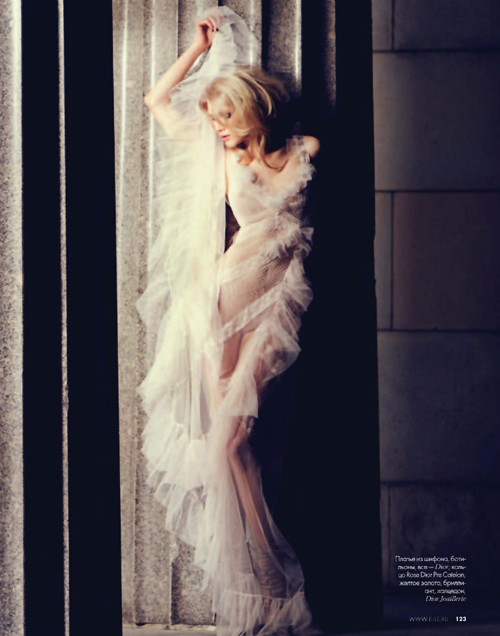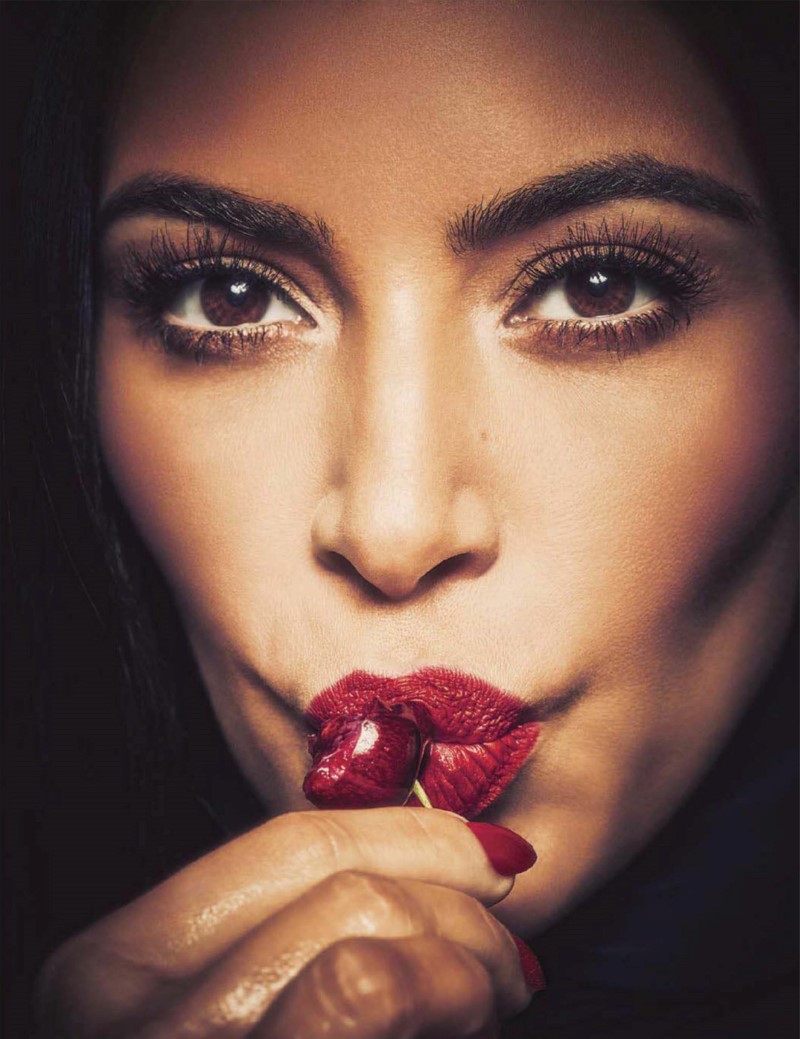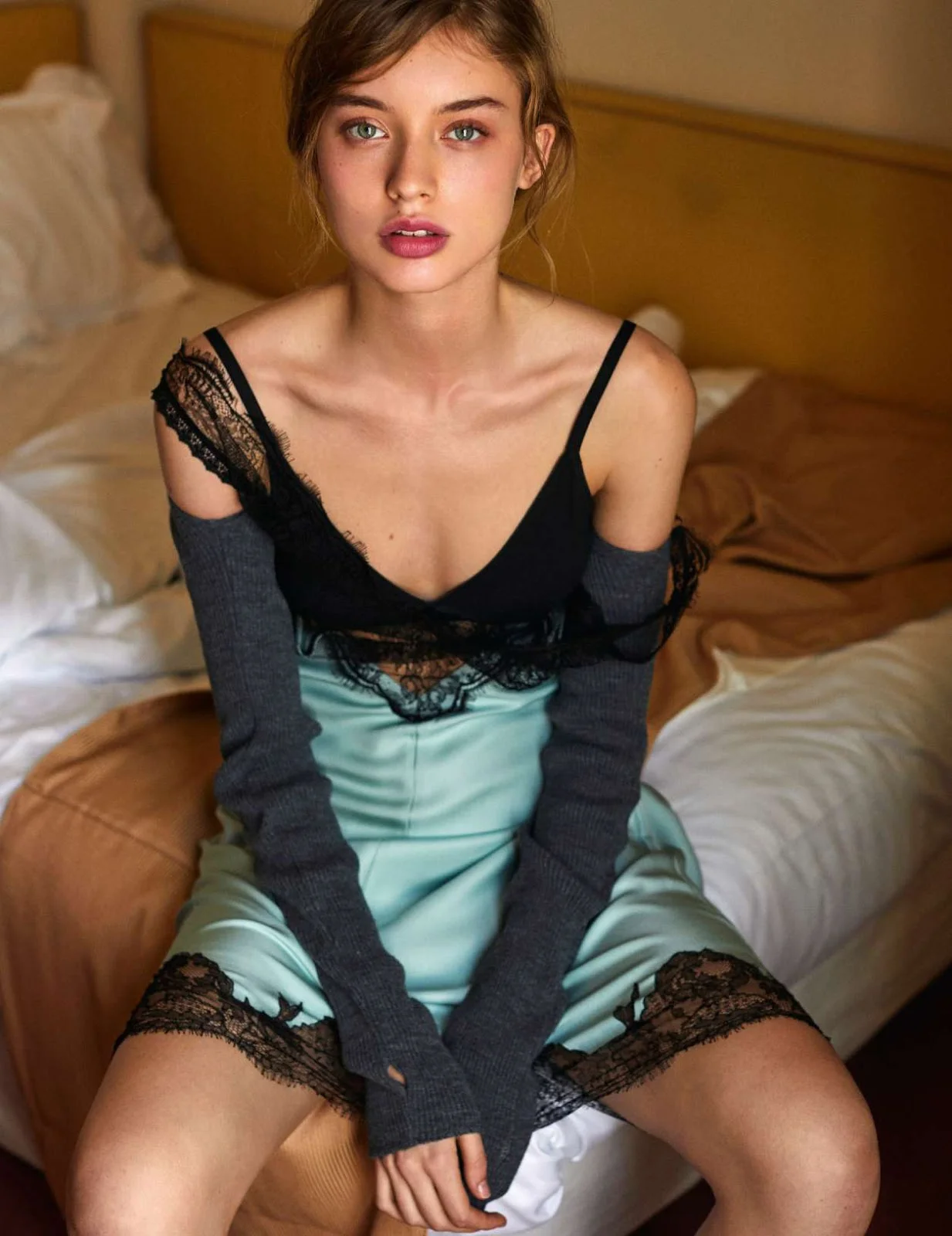Trashy, Commercial, Cliché | Defining Fashion Facist Terms
/
Yulia Terentieva | David Bellemere | Elle Russia August 2011
It’s so interesting reading the image critics. On this excellent blog, one is not permitted to every say a model is too thin. In my specific case, one can’t say that an image of a woman looks like she just left Auschwitz in one particular photo, that it is psychologically unsettling and feminine-power diffusing.
Such a statement beings the wrath of fashionistas and photographers on my head. Consider the industry’s support for “unfairly treated” model Cody Young. WWD gave her a big speaking platform this week. Cody actually agrees that the image was a bad Photoshop job and bad angle. But the fact that viewers and concerned professionals working with anorexic patients responded to the landing-page image damns us all. How dare we push back on an image, saying that we hate it?
Note that I do not believe in censoring comments, because it leaves no opportunity for any intellectual discussion. The consumers of images are expected to never talk about what it means to view them, and I admit that I approach all images from that of the viewer’s perspective.
In commenting on Yulia Terentieva’s images by David Bellemere for Vogue Russia, there is no problem saying that the above image is visually interesting but the one below “trashy”. Thousands of people can read that commentary, and other comments saying “I’ll second that”, she is trashy.
Granted, I am more permissive in my sensual editorial leanings, but in an editorial on sheer dresses, why is Yulia trashy below? Stylist Daria Anichkina creates an all Dior editorial and it is — unsettling?
Fashion Monasticism at Work
Yesterday the commentators on the same influential blog were allowed to say that Greg Kadel has gone “commercial” in his images of Sabrina Nait for Numero. There are several negative comments about Sabrina (and a couple positive, too.) Those same comments about body size would be stricken but they stand on sensuality and selling out with sensuality in images.
One of the Kadel sellout critics regularly distributes oversized images of totally naked models with no warning or Google image protecting on his blog, but that is … . art? He is not using the female body in any way? Kadel is the commercial one? I am so confused.
Is it “trashy” and “commercial” to show sensual women in anything that’s not an abstract art pose — unless it’s on your blog? In referencing Bianca Jagger and the Studio 54 years — but in the country — Greg Kadel is using a cliché, as I now read elsewhere in cyberspace.
Women and horse — two powerful sexual themes in the human psyche — should no longer be used together? Or if she’s riding a Ralph Lauren horse and looking all demure for a fragrance commercial, that’s OK? Can my favorite Vincent Peters editorial of Bianca Balti stand — or is that an icky and distasteful cliché, too?
Perhaps infusing horse and woman into an editorial makes it distasteful because these are Erica Jong daughters I’m reading. In that case, they belong in Big Betrayal | Erica Jong Daughters Ice Sex and Women’s Rights, a dialogue I’m having with and about Erica Jong and her daughter Molly.
If I’m a woman (or man) looking at these David Bellmere images of Yulia Terentieva , and I believe they are “pretty” — but then I read that they are “trashy”, am I not impacted equally as the BMI 18 woman or the thin model reading a comment?
Or can models never be too thin, only too sensual — translated vulgar and trashy.
Clueless to the Pronouncements of Fashion Fascists
It’s fascinating to observe fashion fashionistas at work, and I wish someone would write a post helping me to understand the difference between commercial and artistic images. My goal is to have images be both as much as possible. But then, I am a business person and friend to female sexuality first, with a strong aesthetic second.
Call me clueless as to the tyranny of protecting emaciation but condemning sensuality in the comment sections. The blog owner clearly believes the images are aesthetically pleasing and says so. The issue is censoring the comments. This topic seeps through every pore of culture, religion and the fashion industry. And millions of regular women read them. Do we think they are not impacted? Anne












